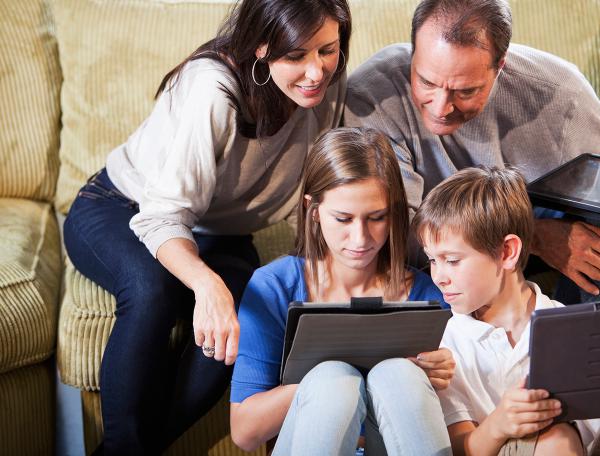Wanted: digital literacy skills

Technology is constantly developing and changing the way we live and work. As the world continues to become more digitised and automated, digital literacy skills are going to become more and more important. But what is digital literacy and what can you do to support your teen to develop their digital literacy skills?
What is digital literacy?
Digital literacy is the knowledge and ability to use technology critically and creatively to find information, solve problems or complete tasks. It is also about knowing how to act safely and respectfully online.
Even though teenagers today are ‘digital natives’ (they were born into a technological world), digital literacy doesn’t necessarily come naturally to them. Teens may find it easy to locate information online, but do they have the skills to examine it critically, to know whether it is trustworthy and accurate? They may regularly see ads on the TV, but are they aware that advertising is intended to manipulate the audience into buying a product? They may be able to shoot off a quick text message, but do they know the conventions of other online forms of communication? They may easily upload photos to social media sites, but do they know how to act responsibly and safely while online?
What is happening in schools?
Digital literacy is already a focus in schools. Digital Technologies has been developed as one of the learning areas of the Australian Curriculum, and digital literacy skills are taught in English, alongside other, more traditional forms of literacy. Schools are recognising that digital technologies impact all areas of our lives and are using technology across all subject areas in new ways. Students are able to use a wide range of technologies to gather information, solve problems, be creative and collaborate with their peers, while also thinking critically.
What can you do at home?
There are many things that you can do at home to help support your teen’s digital literacy skills:
Use technology together
This is a great way for your teen to understand how to use media positively – and they will enjoy spending the time with you! It can also help you to monitor the content that your teen is accessing, both online and on TV.
Talk about technology and the media
Talk about the ads you view together and what the advertisers have done to try to convince you to buy their product. If you’re watching or reading the news together, talk to your teen about how the media can sometimes present only one side of a story. This will help them to think critically when they consume messages through technology.
Gaming and learning
If your teen plays online games, try to encourage them to play games that can develop their digital literacy skills. For example, online games such as Pokémon Go can help teens develop skills like collaboration, problem solving, data collection and analysis – all critical to digital literacy. Talking to your teen about the games they play gives them an opportunity to share their learning with you.
Balance technology use
Encourage your teen to balance their technology use as well – talk about limits for screen time, and encourage them to do lots of non-screen based activities, like sport, playing music, reading books and spending time outdoors. Try to model this positive behaviour too, by enjoying technology on occasion, but letting your teen see you enjoy other activities as well.
Talk about safe behaviour online
Talk to your teen about the information they share about themselves online. Make sure your teen knows that when they upload something to the internet, it is nearly impossible to remove it again. Discuss keeping passwords safe and how to use social media sites responsibly. Talk to your teen about how to use apps, such as Snapchat, appropriately – and remember, just because the image disappears from their view doesn’t mean that it is gone!
For more information about ways that you can make sure your teen is safe online, check out the eSafety website.








